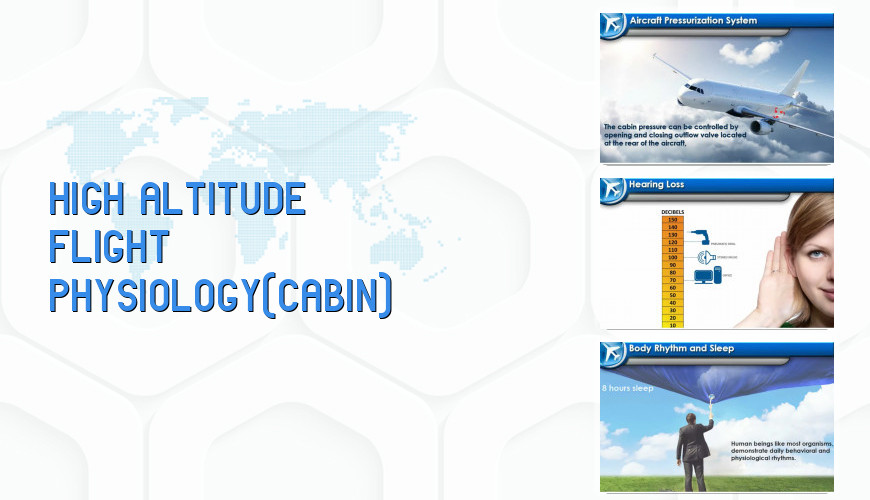
Course Information
This required course covers the following information in depth; a discussion of the components of the atmosphere to include a review of the gas laws. A description of the human respiratory and circulatory systems to include discussions on the human body components of these systems, anemia, hypoxia, hyperventilation, heart disease, the oxygen requirements at altitude, and Time of Useful Consciousness. A review of aircraft pressurization system, decompression sickness (DCS), the risks of temperature and radiation on high altitude operations. Human sensory systems to include, the nervous system, vision, sensory adaption, the effects of light and dark, hearing, equilibrium, and sensory inputs such as spatial orientation, visual illusions, empty field myopia, excess-“G”s, and the Coriolis Effect and human health and hygiene to include circadian rhythm, fatigue, body temperature, gastro-intestinal problems, tropical conditions and their effect on health, infectious diseases, intoxication and incapacitation in flight.
Content of the Course
| Slide | 88 | Duration | 01:30:15 | Exam | No |
|---|
- COURSE START
- BASICS OF FLIGHT PHYSIOLOGY THE ATMOSPHERE
- Respiratory And Circulatory Systems
- Aircraft Pressurization System
- High Altitude Environment
- Extreme Temperature
- MAN AND ENVIRONMENT – THE SENSORY SYSTEM
- Light And Dark Adaptation
- Sunlight And Its Effect On The Eyes
- Hearing
- HEALTH AND HYGIENE PERSONAL HYGIENE
- Body Rhythm And Sleep
- Fatigue Definitions
- Body Temperature
- Gastro Intestinal Upsets – Abdominaldistension
- Obesity
- Tropical Climates
- Infectious Diseases
- Intoxication
- COURSE END

